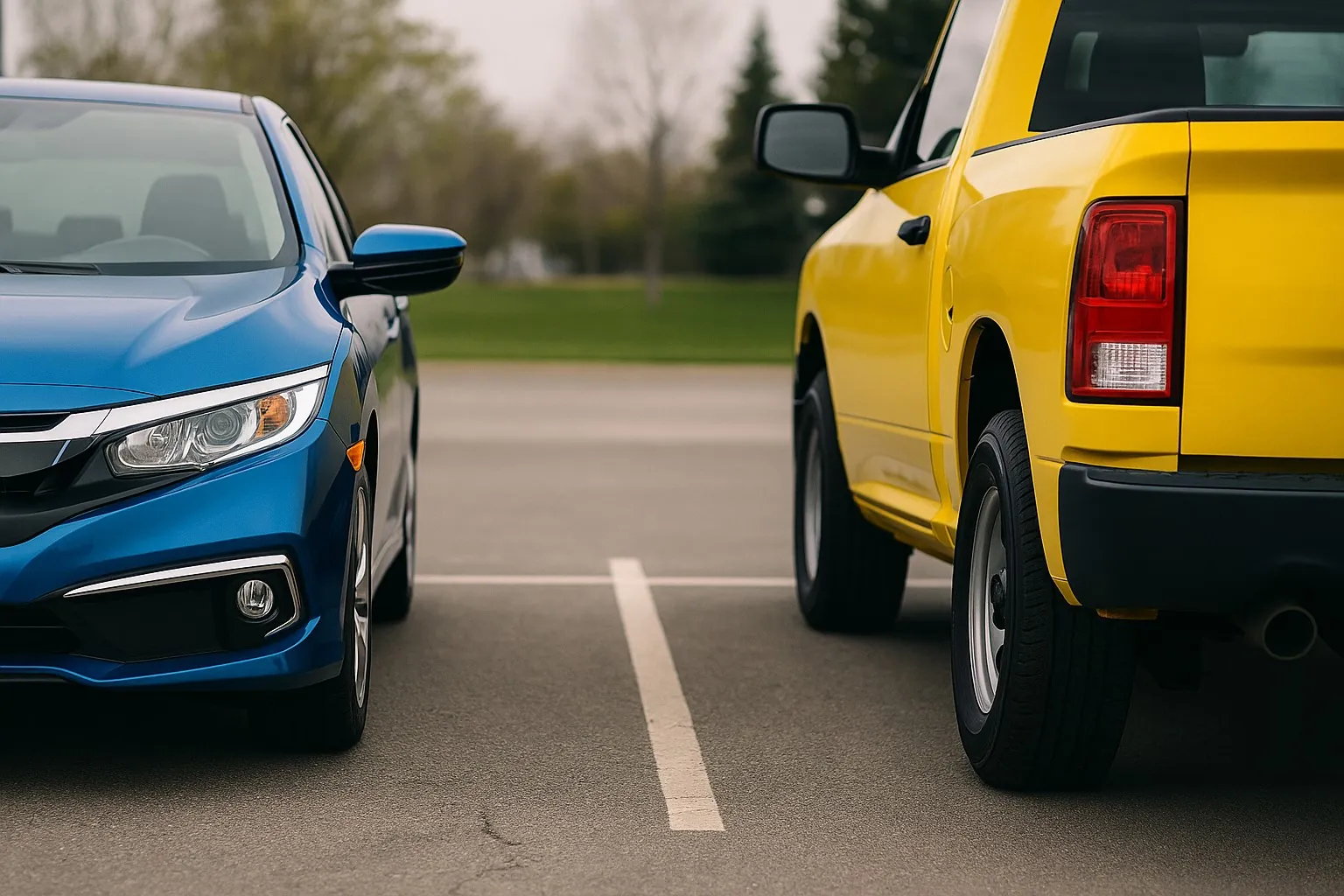Understanding the Difference Between Powertrain vs. Comprehensive Warranty
What’s the difference between a comprehensive and powertrain warranty? First, if you’ve ever bought a brand-new vehicle, you may have noticed something about the warranty coverage. There are a bunch of different warranties!
Manufacturer warranty coverage varies from brand to brand and can include varied protection for specific parts like emissions, electronics, or corrosion. However, two important primary types of coverage come with each vehicle: comprehensive (or basic) and powertrain warranties. The phrase “bumper to bumper” is often used in place of comprehensive, but that is starting to change now because it is a misleading title.
So, what is the difference between Powertrain vs. Comprehensive Warranty coverage? Here’s what you need to know:
🛡️ Comprehensive Warranty
This is the highest level of coverage that automobile manufacturers offer. It begins the day the car is first sold (also known as the first-in-service date).
Definition: A comprehensive warranty provides extensive coverage, protecting most vehicle components from defects in materials or workmanship.
These warranties are always established with exclusionary language. What does that mean? If the manufacturer doesn’t list something as an excluded item, it’s covered if it breaks down. Describing this coverage as “comprehensive” instead of “bumper to bumper” is better. That’s because there are always components between a car’s bumpers that aren’t covered. Or fall under different warranty terms, like emission systems. The bumpers themselves are never covered either!
Coverage Includes:
- Electrical Systems: Wiring, sensors, infotainment systems
- Suspension: Control arms, coil springs, ball joints
- Brakes: Master cylinder, ABS components
- Steering: Power steering pump, rack and pinion
- Heating and Cooling: Air conditioning, heater core
- Powertrain: Engine, transmission, driveline
Exclusions:
Excluded components are primarily wearable parts. These parts are expected to degrade over time or break or become damaged only due to an accident or user error.
- Wear-and-tear items: Tires, brake pads, wiper blades
- Regular maintenance: Oil changes, filter replacements
- Damage from accidents or misuse (paint, body panels, galss)
Duration:
Typically lasts 3 to 5 years or 60,000 to 100,000 km, whichever comes first.
🔧 Powertrain Warranty
A vehicle’s powertrain coverage is almost always longer than its comprehensive coverage. What does a powertrain warranty include? It covers the parts of a car that provide power and make it move, including the engine, transmission, and drivetrain. Other components included are transfer cases, differentials, and engine internal workings. These can be some of the most expensive to repair, so it’s important to have them covered.
Definition: A powertrain warranty covers the components that generate and deliver power to the wheels.
Coverage Includes:
- Engine: Cylinder block, internal parts, oil pump
- Transmission: Gearbox, torque converter
- Drivetrain: Driveshafts, axles, differentials
- Transfer Case: For all-wheel or four-wheel drive vehicles
Exclusions:
- Electrical components
- Air conditioning
- Suspension and steering systems
- Wear-and-tear items and regular maintenance
Duration:
Generally extends longer than comprehensive warranties, often 5 to 10 years or 100,000 to 160,000 km.
🔍 Comparing Comprehensive and Powertrain Warranties
| Feature | Comprehensive Warranty | Powertrain Warranty |
|---|---|---|
| Coverage Scope | Most vehicle components | Engine, transmission, drivetrain |
| Duration | Shorter (3–5 years) | Longer (5–10 years) |
| Cost | Higher due to extensive coverage | Lower due to limited coverage |
| Ideal For | New vehicles with advanced tech | Older vehicles focusing on essentials |
📈 Comprehensive and Powertrain Extended Warranty Options
After the manufacturer’s warranty expires, you may want to consider an extended warranty to continue coverage. Should you buy a powertrain-only warranty or a more comprehensive one?
- Extended Comprehensive Warranty: Mirrors the original comprehensive warranty, covering a wide range of components.
- Extended Powertrain Warranty: Continues coverage for the engine, transmission, and drivetrain components.
Technology is revolutionizing vehicles, which now have up to 30,000 components. Many parts prone to breakdowns aren’t included in powertrain extensions. Depending on your vehicle’s age and mileage, you will need to determine which option offers the best coverage at the most affordable price point.
An extended warranty typically covers unexpected breakdowns. The price point of powertrain-only coverage can be attractive. But you are more likely to experience many repairs beyond what this offers. Parts not included in powertrain coverage, such as steering, electrical, and suspension components, tend to fail more often. These can be costly repairs that affect a vehicle’s safe operation.
Tip: Always review the terms, coverage details, and exclusions of any extended warranty plan you are considering. Ensure it aligns with your vehicle’s condition and your driving habits.
🧠 Choosing the Right Warranty for Your Needs
- New Vehicle Owners: A comprehensive warranty offers peace of mind by covering most components, including advanced electronics and comfort features.
- Used Vehicle Owners: A powertrain warranty can be a cost-effective choice, focusing on major mechanical components that are expensive to repair.
- Budget Considerations: If budget constraints are a concern, a powertrain warranty provides essential coverage at a lower cost.
- Vehicle Usage: For vehicles subjected to heavy usage or long commutes, comprehensive coverage might be beneficial due to the increased risk of component failures.
💬 Final Thoughts
Understanding the distinctions between comprehensive and powertrain warranties empowers you to make informed decisions about your vehicle’s protection. Assess your vehicle’s age, condition, and your personal preferences to choose the warranty that best suits your needs.
Visit our quote page to receive a free quote for your vehicle. Or get in touch with our team to explore our warranty options tailored for Canadian drivers.

